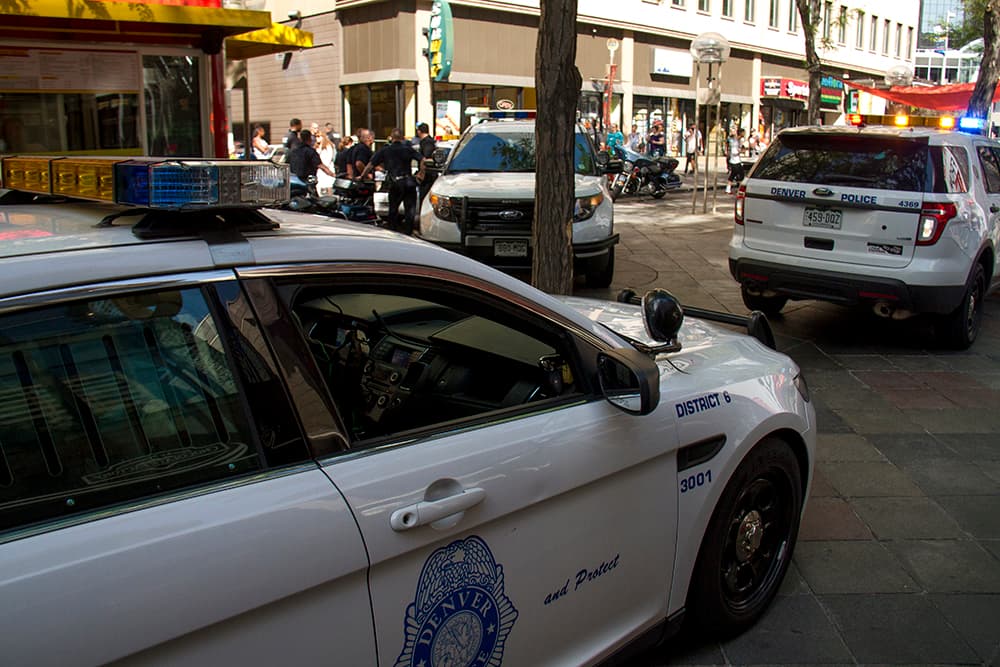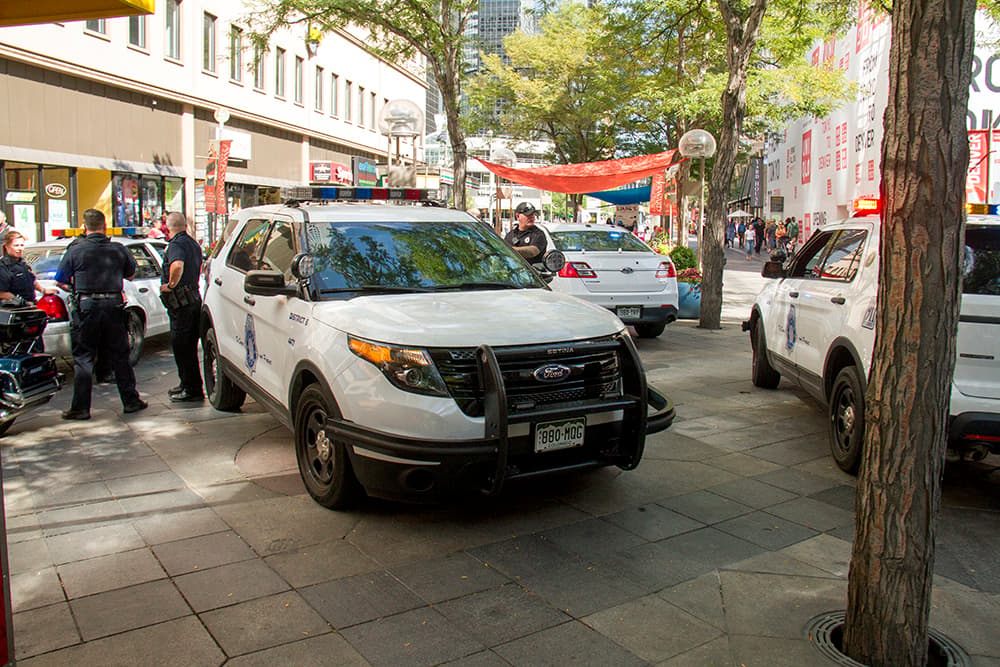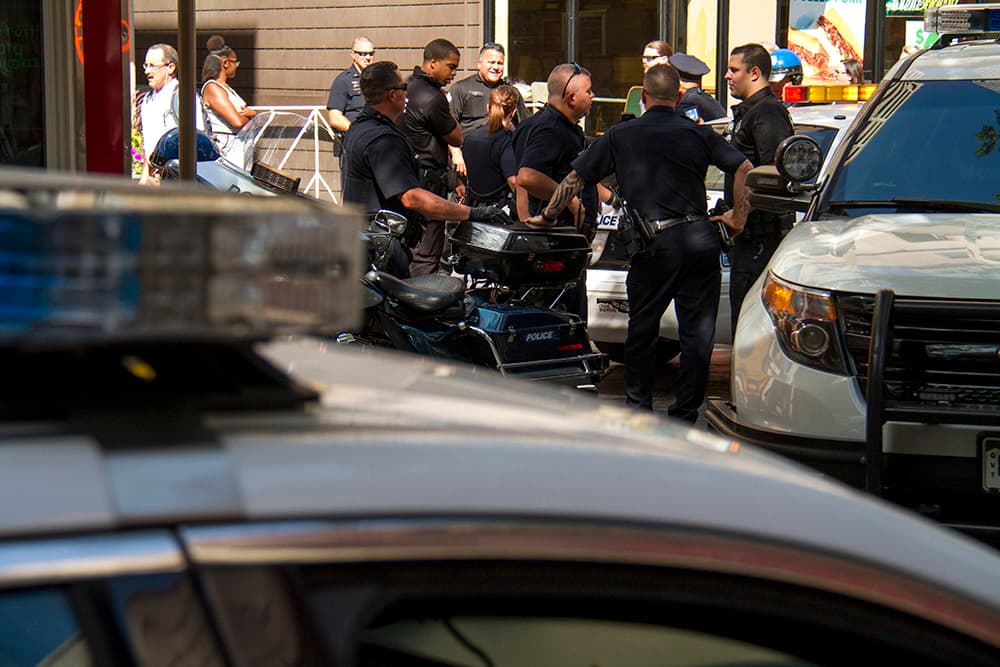
In the minutes after a fatal shooting in a downtown office, two local news anchors started to speculate.
We'd been hearing every few nights about the latest in a string of violent incidents on the 16th Street Mall, many of them involving apparently homeless people.
Now, the television asked, had scuffles and stabbings turned into shootings?
No.
Cara Russell was murdered by her estranged husband, a flight instructor. But it had sounded for a minute like another point in a trend.
Violence on 16th Street Mall has been a huge topic in local news this summer. Just a few days earlier, Mayor Michael Hancock had warned of a "scourge of hoodlums."
One group in particular has attracted much of the blame: "Urban travelers." They are the people who come each summer to live in the city's parks and streets. The general perception is that they're young, they skateboard and they wear dreadlocks.
"We're not talking about Denver's homeless," Hancock said. Later, he told the Denver Post there were about 150 travelers in town. He has argued that the worst of them are out to cause trouble by intimidating and harassing the city's residents.
"They’re taking beds from our chronically homeless people,” the mayor said.
The Colorado Springs Business Journal echoed his logic, recently arguing that what Denver's seeing is part of a larger "roving gang of vagrants" that has descended on the Front Range.
"These young men and women aren’t the same as the homeless population that typically populates city centers," the editorial claimed.
"Instead, they enjoy being rude, obscene, overly forceful ... They only want your cash, not your assistance — and certainly not a job."

Let's start basic: Do travelers really come here?
Yes. There really is a group of traveling young people who loop between Denver and other cities. They don't call themselves "urban travelers," but they might say "gypsy" or "traveler."
Generally, they take pride in being different from locally homeless people ("homebums," as some say) and from mainstream culture.
"I don’t want any child of mine to be born in a hospital, or have a Social Security number, or any of that. I wish I didn't have that," says Prax, a 20-something who was passing through Denver this winter.
Hancock has said that travelers come to Denver for marijuana, and that's certainly true in many cases.
"I can’t tell you how many times I’ve talked to kids – why are you here? I’m here for the weed," says Doyle Robinson, founder of the Sox Place daytime shelter.

Why are they traveling?
I've conducted a couple dozen interviews with young, traveling people around downtown Denver over the last year.
Like I said above, many of them take pride in a kind of bohemian lifestyle. They like to make fun of yuppies. They don't get why you'd stay cooped up in an office all day.
Yet most told me, eventually, that their travels began with some familiar problem: Substance abuse, mental illness, abusive environments, incarceration. They shared a lack of faith in the system.
"As far as stability’s concerned though - it’s totally an illusion," Prax says. "You can’t count on anything, day to day. Maybe that’s what I learned, losing everything."
Academic research shows much the same. A University of Illinois study on runaway youth found the following correlations:
- Kids in foster care were almost four times more likely to run away from home
- People who identified as bisexual were three times more likely to leave home
- Verbal, physical and sexual abuse all correlated with running away
- Runaways are far more likely to use marijuana, but not alcohol, than the population at large
"Most of the people I know on the road - we were all, including myself - we were all abused and became runaways," says Nick, a visitor to Denver who spends his days outdoors. "We weren’t dealing with the foster parents and the bullshit."

Why are they getting so much attention this summer?
Well, some of the suspects in these latest cases have indeed lived transiently.
Clarence Seeley, who is accused of hitting people with a PVC pipe, reportedly had been in town for less than ten days at the time of the assault. In an interview with KDVR, he said that he came to Denver for legal marijuana to treat his schizophrenia.
I also tracked suspects from the fight involving an officer worker; at least two of the four had lived or been charged in California.
But what do we know beyond these few incidents?
The bigger question – of whether travelers are especially violent – is much murkier. It's not like "urban traveler" is a checkbox on an arrest report, and it's not a distinction used by any research I've read.
What I can say, though, is that travelers have a good reputation in Denver's street culture.
"Travelers are ones who ride trains, who may have an old van they’re traveling through with. They’re the most polite, appreciative respectful segment we have," says Doyle Robinson. "I wish we could close our doors to everybody but them."
I asked the same question to a group of young, locally homeless people: What's different about travelers?
“They’re ignorant," says Yousef, who grew up middle class in Denver.
“But pretty much they’re like any other homeless kid," adds Skinny, who traveled until heroin got him stuck here.
"Looking for something," Yousef quips.

Then what explains the violence?
There's no denying that this summer has brought violence, drug abuse and aggressive confrontations.
To be fair, all that happens in downtown Denver's club scene too. Doyle Robinson says he sees more public urination by well-dressed drinkers than his own clients.
Yet he acknowledges too that aggression and anti-social behavior is common among young people experiencing homelessness. I hear the same from travelers and locals alike.
"If I say 'nice shoes,' and they don't respond, then (I say) 'FUCK YOU,'" Yousef explains.
Aggression is a way to be heard, he says, in a world that looks down on him. It's also a well-documented reaction to trauma and violence.
Witnessing violence can drive "behavior problems, aggression in peer interactions, social isolation and rejection, and diverse other consequences" among homeless kids, according to a study published by Aggression and Violent Behavior.
In a study in Denver and Los Angeles, about one of three homeless youth showed symptoms of PTSD. This doesn't mean that you should fear people you see on the streets – but it does show how living out there can create this tension between housed and house-less people, and it points at just how deep these issues run.
"This is what the public sees: They don’t see broken lives and damaged souls. They don’t see addictions and mental illness and homelessness," says Doyle Robinson. "They see this loud, obnoxious behavior. Rude, stubborn. 'I don’t want to get out of the way. Why should I get out of the way?' They see the trash, they see the loud talking."
What's next?
We'll be watching the story of this summer's violence on two fronts.
The first is security. This month, the Downtown Denver Partnership will roll out a private security force on 16th Street, at a cost of $1 million per year, and the city police has put more officers on the beat.
We can't say yet whether that change will reduce crime on the Mall. If it succeeds, the city still may be left with these issues in other parts of the city.
The second part of this story is about what the city does beyond enforcement. Mayor Hancock announced his affordable-housing plan earlier this summer.
As it evolves, we'll be asking just how it and the rest of the city's efforts might change what we see on Denver's streets.
Reporter Andrew Kenney is at [email protected] or twitter.com/andyknny.












